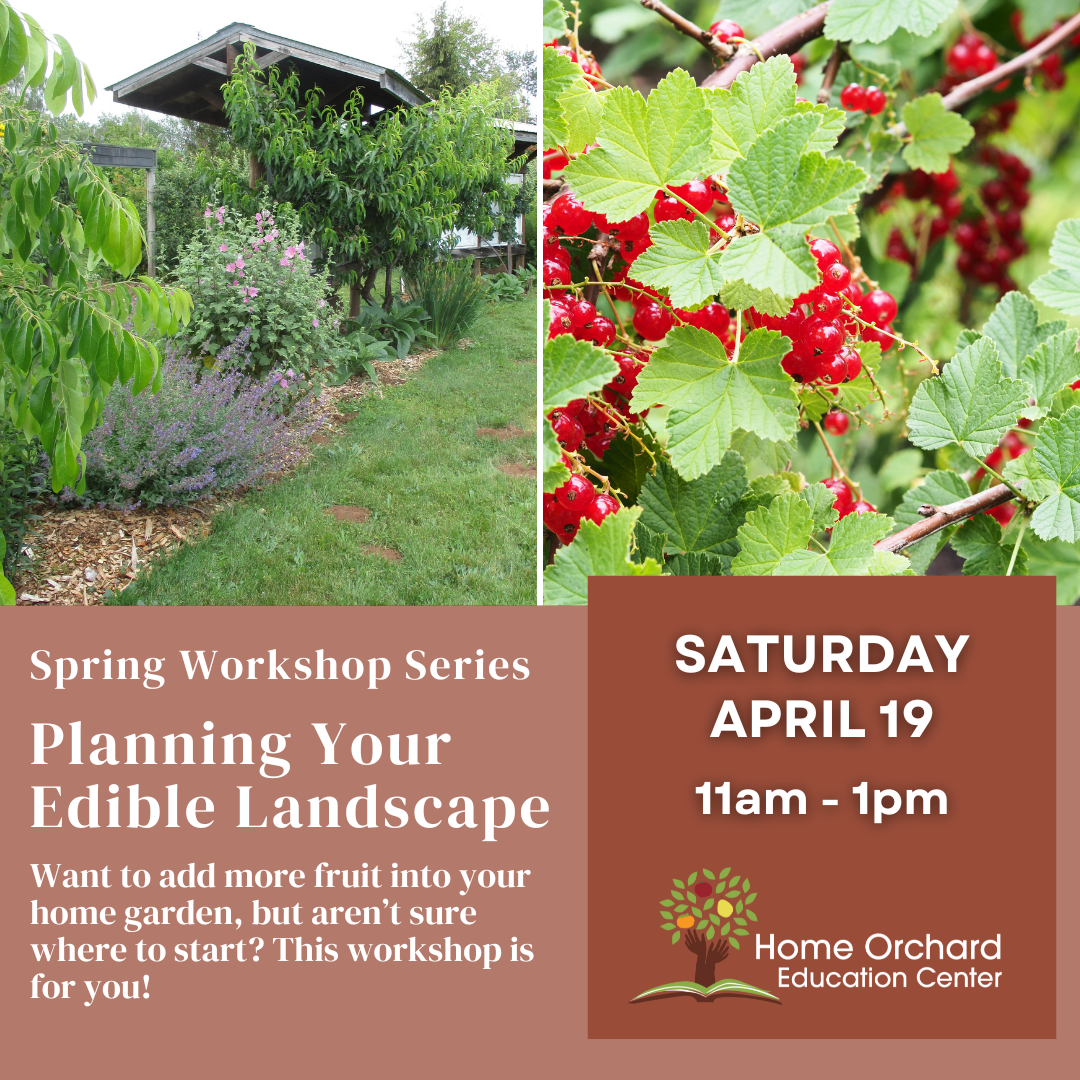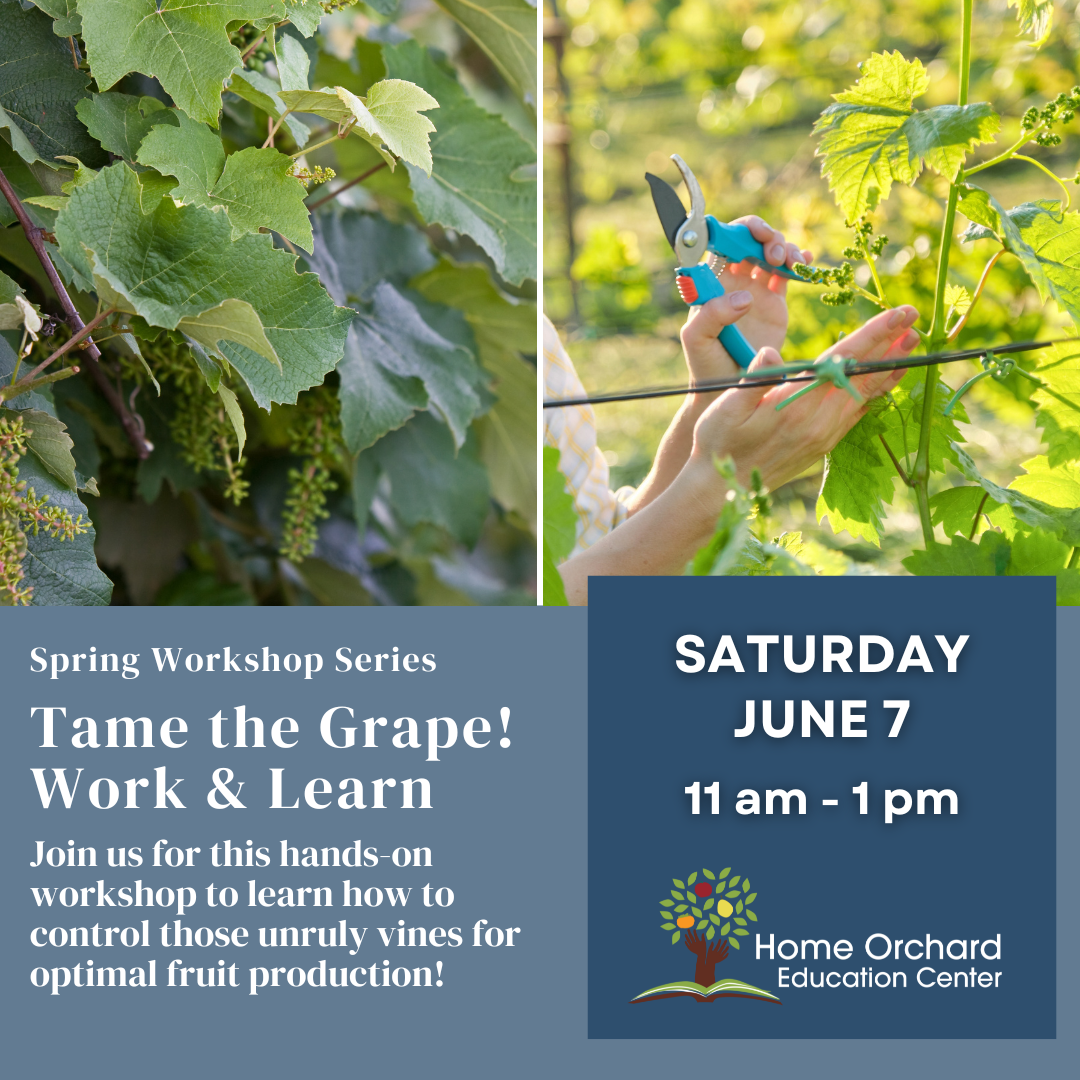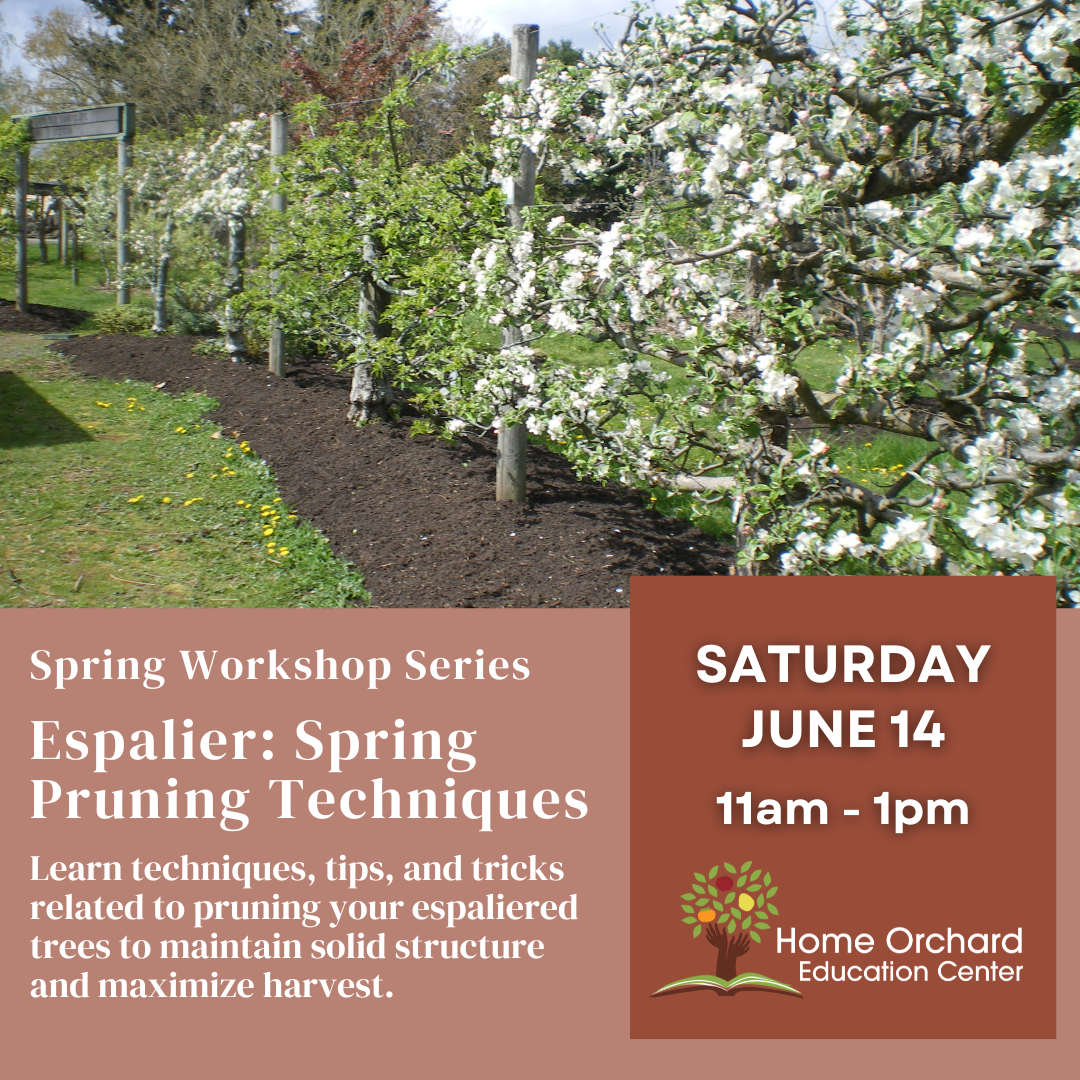Great Grapes for the Willamette Valley
by HOEC Volunteer Amy Manning
Curious about growing grapes?
Chances are you’ve probably seen the mind-boggling array of varieties available to you.
They all sound SOOOOO exciting! How on earth do you choose a variety best suited to your palette and your space?
Here’s a handy guide to get started.
DO RIGHT BY YOUR REGION
Not every kind of grape listed in popular catalogs (or even local garden centers) is tested for performance in our region. That means it might have rave reviews, but not do well for you.
Pests, disease, and growing season vary wildly in different regions, even if they are within the same plant hardiness zones. Selecting a regionally appropriate cultivar (variety), that shows some resistance to common diseases in your area, can help set you up for success in your garden.
We’ve selected some varieties that we feel perform best in western Oregon and Washington. We did this by going through the suggestions from trusted resources and cross-referencing that with our own experience here in the HOEC Community Orchard. Selecting from our list does not guarantee you will not have issues - but you are far less likely to - especially if you follow good planting practices and basic pruning techniques.
GRAPE GROWING BUMMERS
The list of varieties we’ve selected for you are the best for avoiding pests and disease. For reference, the top three pest and disease problems we’ve seen in our area:
Erineum Mites: a frustrating microscopic pest that causes blistering on leaves and can set back your plant and interfere with berry formation.
Bortrytis Bunch Rot: aka Gray Mold; causes yucky, premature rotting of fruit clusters.
Powdery Mildew: causes a powdery fungal coating to develop on leaves, which will set your plant back. Sadly, it can also cause the fruit to fall off prematurely.
LET’S GET TO THE LIST!
With all of that out of the way, here are our suggestions for grapes that do well in our region.
Earliest Ripening Grapes:
The following cultivars typically ripen before the rainy season, lessening the possibility of cracking and molding. If your growing space is somewhat lacking in heat or a bit higher in elevation than the valley floor, this might be a good place to start. They may also do well on the coast, if you happen to be in that region.
Interlaken: Very early. Green to yellowish berries. Seedless. Prolific bearer. Flavor is foxy/sweet. Makes excellent raisins and frozen berries. Fruit can hang for a long time on the vine. Best cane-pruned.
Himrod: Very early. Green seedless. Flavor is mild and described as honey-like. Has some susceptibility to powdery mildew if not well pruned. Requires cane pruning.
Canadice: Early. Red seedless. Slipskin. Very productive. Mild foxy flavor. Does have a tendency to overbear, requiring fruit thinning and careful pruning. Prune 2-4 nodes and cluster thin if needed.
Vanessa: Early. Red (mostly) Seedless. Stores well. Flavor is mildly fruity. Cane prune if high vigor, otherwise spur prune.
Reliance. Red, seedless, heavy cropper. Color is variable. Very sweet. Easy to train to cordons with spurs.
Mid Season:
These varieties typically ripen soon after the early grapes and are a good choice if you would like to extend your harvest. The cultivars listed below have tested well in terms of resistance to cracking and molding even if the rains come while they are still ripening.
Swenson Red: Early to mid-season. Red/blue or even green color depending on night temperatures. Has seeds. Foxy in flavor, sweet, aromatic. Prune 5 buds per spur.
Buffalo. Blue/black concord type. Flavor is fruity and spicy. Has been used in wine-making. Prune to 3 bud spurs on cordons.
Jupiter: Mid-season: Red, seedless. Mild muscat flavor. Resists cracking. Makes good raisins. Very productive. Best spur pruned.
Centennial: Mid-season. Firm and crisp with mild muscat flavor. Very large berries. Seedless. Prune to canes.
Alden: Mid-season. Highly aromatic, disease resistant, and prolific. Prune the spurs to no more than 2 buds to prevent overcropping.
Advanced and later ripening grapes:
These varieties are for the slightly more adventurous gardener. They are suited for the grower who really wants special flavor profiles. These varieties do relatively well in our area, but do have challenges and you may need to seek out disease prevention programs. If your goal is low maintenance, don't choose from this list!
Muscat Hamburg**: Medium-late. Resists cracking. Consistently excellent flavor. Train to cordons with spurs.
NY Muscat**: Early/mid-season. This grape is susceptible to powdery mildew. Fruity, rich outstanding muscat flavor. Has seeds. Reddish blue berries. Best spur pruned. Train to cordons with 2 or 3 bud spurs.
Golden Muscat**: Mid-late season. Has seeds. Super aromatic and delicious. Prune to 3 bud spurs on Cordons.
**All of the muscats in particular are disease prone. In our experience these grapes will not perform well in our region without a preventative organic spray program… but they are delicious!
This is, by no means, an exhaustive list! Please use it as a starting point. It’s also helpful to chat with your neighbors and other gardeners to find out what has done well for them.
Once you have selected the varieties/cultivars to plant, write them down in a safe place. (Google Drive is great for this task.) Your neighbors and other gardeners that you meet in the years to come will want to know what fabulous variety has done so well for you, and your future self will thank you for saving this information!
HOW TO USE YOUR BOUNTIFUL HARVEST
If all goes well, once your vines are mature you will be rewarded with a lot of fruit. Once you’ve stuffed your family full of fresh, yummy grapes, what to do with the rest?
Suggestions include:
Share with friends, neighbors, food pantries (like this one in Clackamas County)
Jam without added pectin
Freezing: One volunteer favorite is to simply freeze the berries. Once partially thawed they make excellent snacks. Freezing on a sheet pan prior to packing in containers will help prevent them from sticking together, making it easier to get out a manageable amount. Try this nibble with kids!
Freeze-drying: freeze dryers are incredibly expensive. However, it is worth mentioning that those who’ve sprung for a freeze dryer particularly like freeze-dried grapes.
RESOURCES:
Growing Table Grapes by Oregon State University
Pacific NW Grape Pests by Oregon State University
Grapevine Pest and Disease ID and Management by Washington State University
Grape Pruning by Oregon State University
Book: The Grape Grower by Ron Lombaugh
Ron Lombaugh’s website: www.bunchgrapes.com
If you enjoyed this content, please consider making a donation. We welcome support of any size!
HOEC is a volunteer-driven 501(c)3 non-profit.










